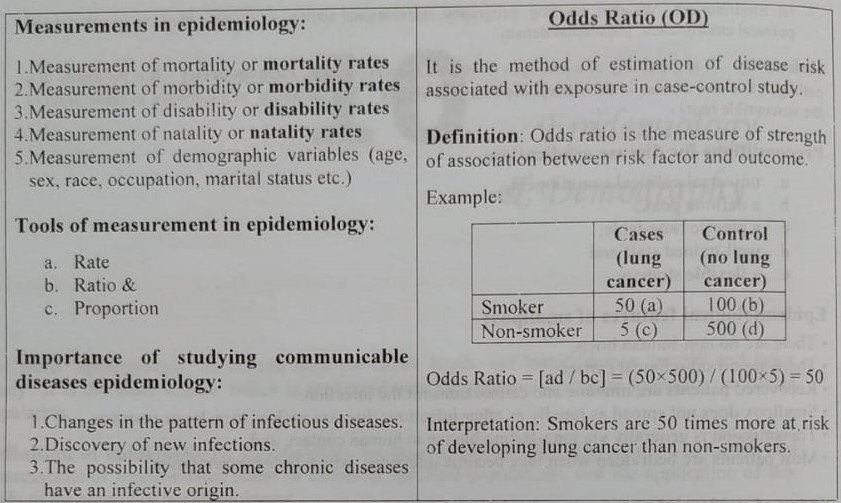Today is our topic of discussion Epidemiology And Demography
Epidemiology And Demography

The word “epidemiology” is derived from the Greek words: epi ‘upon’, demos ‘people’ and logos ‘study’. It is the basic science which is concerned with the patterns of disease frequency in human population.
Definition of epidemiology:
Epidemiology has been defined as ‘the study of the distribution and determinants of health-related states or events in specified populations, and the application of this study to the control of health problems’.
Epidemiologists are concerned not only with death, illness and disability, but also with more positive health states and, most importantly, with the means to improve health.
Components of epidemiology:
1. Disease frequency
2. Distribution of disease.
3. Determinant of diseases
Disease frequency:
It means ‘measurement of frequency of disease, disability or death, which are summerized in the form of rates and ratios’. Such as, incidence rate, prevalence rate etc.
Distribution of disease:
Disease distribution is meant in terms of
a. Person – Age, race, sex, occupation, education, hobbies.
b. Place – Geographic, climatic, geo-political, urban/rural, industry
c. Time – Episodic, cyclical, secular
Determinants of disease:
Identification of causes and risk factors for disease. These are –
Agent:
1. Biological – Bacteria, virus, fungus, protozoa, helminths.
2. Chemical Poison, smoke, foods, alcohol, allergen, drugs.
3. Physical – Radiation, fire, cold, noise.
4. Nutritional – Lack or excess.
Host –
Age, gender, genetics, behaviour, predisposition, nutritional status, smoking, stomach acidity,
hygiene.
Environment –
Weather, housing, geography, occupational setting, air quality, food, socio-cultural and political environment, population density.
Infectivity –
It is the ability of a pathogen to infect a susceptible host; Pathogenicity – It is the ability of a pathogen to cause disease in the susceptible host; Virulence – It is the ability of a pathogen to cause death of the susceptible host

Preconditions for disease eradication:
a. universal political commitment,
b. a definite goal,
c. a precise time-table,
d. well-trained staff and
e. a flexible strategy
Epidemiological features of smallpox:
- There are no non-human hosts,
- There are no sub-clinical carriers,
- Recovered patients are immune and cannot transmit the infection.
- Smallpox does not spread as rapidly as other infectious diseases such as measles or pertussis.
- Transmission is generally via long-lasting human to human contact, and
- Most patients are bedridden when they become infectious, which limits transmission.
Scope of epidemiology:
1. Whole population in their living & working environment
2. Factors that determine a state of health & disease
3. Pattern of health as well as pattern of illness
4. Measures of prevention & control
5. Distribution & causes of human health problems
6. Multiple factors of causation
Aims of & objectives of epidemiology:
1. To describe the distribution (in terms of time, place and person) and magnitude of health and disease problems in human populations.
2. To identify etiological factors (risk factors) in the pathogenesis of disease; and
3. To determine transmission pattern of a disease problem in the population.
4. To provide information necessary for planning, implementation and evaluation of measures taken to eliminate or reduce health problems or their consequences and to setting up priorities for the measures.
Uses of epidemiology:
1. To study historically the rise & fall of disease in the population
2. To diagnose the health status of the community
3. Planning & evaluation of health services and programs
4. Evaluation of individual’s risk and chances
5. Syndrome identification
6. Completing the clinical picture/natural history of disease
7. Searching for causes & risk factors for establishing causal relationship

See also :

1 thought on “Epidemiology And Demography”